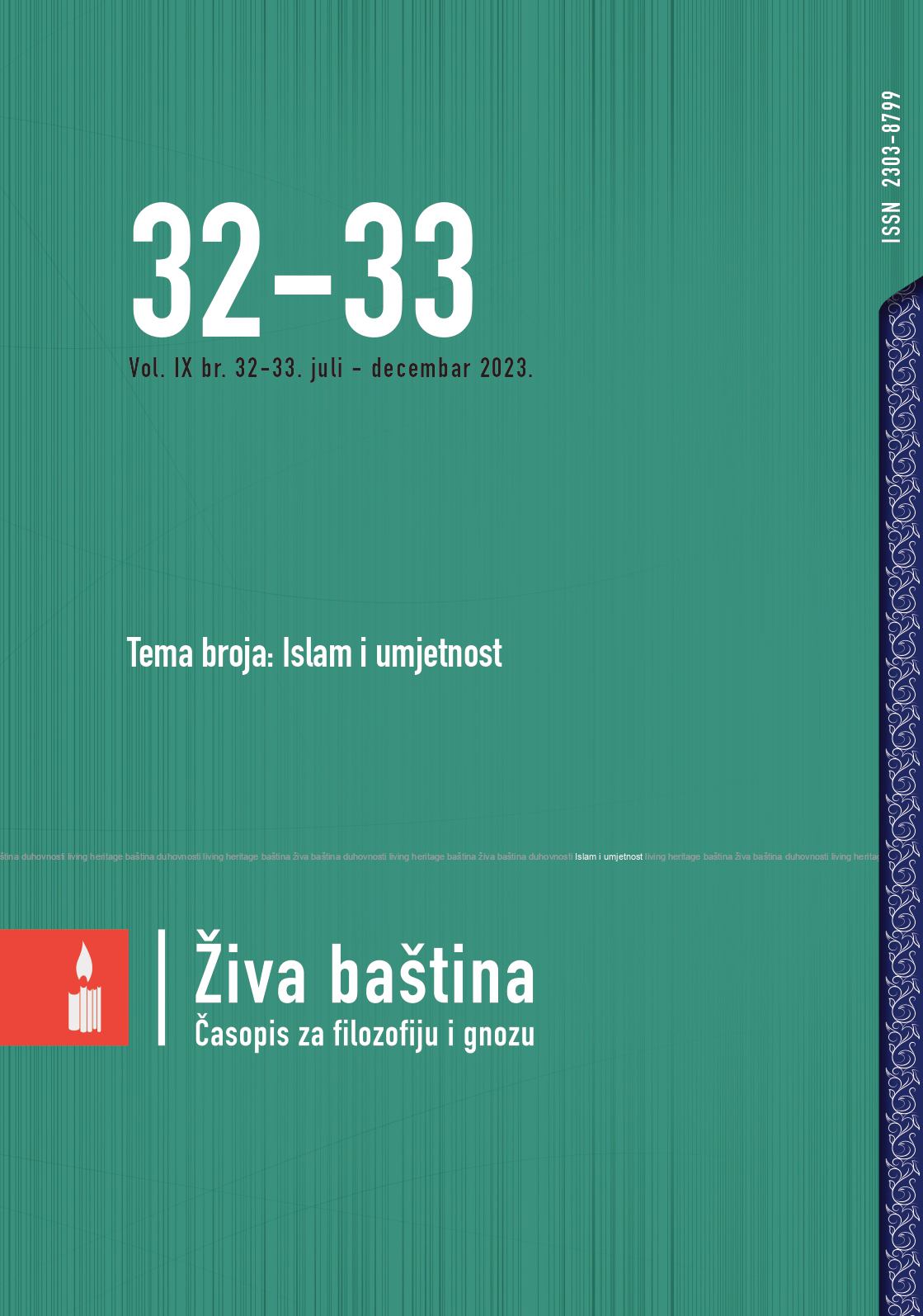Estetika u sufijskoj poeziji: Stvaralačka imaginacija i simbolika kod Ibn Arebija i Mansura ibn Al-Halladža
Aesthetics in Sufi Poetry Imagination and Symbolics in the Thought of Ibn al-'Arabi and Mansur al-Hallaj
Author(s): Shaofi QowayderContributor(s): Adnan Mešanović (Translator)
Subject(s): Philosophy, Aesthetics, Theology and Religion
Published by: Fondacija “Baština duhovnosti”
Keywords: creative imagination; symbolism; aesthetics; Ibn al-‘Arabi; Mansur al-Hallaj;
Summary/Abstract: The author, after he offers several definitions of understanding imagination in the introductory part, concludes that imagination in Arabic-Islamic heritage is closely related with many philosophical, theological-scholastic, sociological topics, so it is difficult, from this perspective, to offer a single comprehensive intellectual model.Taking into consideration the introductory notes, the author, further in the paper, tries to answer the following question: how Sufis perceived imagination? In which manner did, in their own spiritual experience of Sufi aesthetics, and especially poetry, Al-Hallaj i Ibn al- 'Arabi use this potential and power? In his answer the author actually asserts that Sufis are those who attached great significance to imagination that is distinguished in terms of sacredness in Arab-Islamic thought. Sufis use imagination in order to make a transition from knowledge (ma'rifat) to Sufi Irfan. Imagination enlightens the path of sublime meanings (al-haqāiq al-muta'ālije), those meanings that neither a sharp mind nor acumen of a philosopher or just an ordinary man can reach. The creative imagination that Al-Hallaj uses to ascent into the world of metaphysical imagination is enrobed in his case with a sense of aesthetic. He uses language to express creative imagination that runs through every human being and that can be felt only by those special people amongst those who are especially spiritually endowed. Those are Sufis who are amongst those highly spiritually enlightened that have arrived to the goal. Hallaj's sense for aesthetics through imaginations contained wahdati shuhud (unity of existence), unification, fusion. By using creative imagination Hallaj climbs to higher realities, from manifested world all the way to the World of Spirit where he accomplishes experience of vanishing in Truth (fanā') and Sufi experience of beauty that he reveals in his poetry that embodies spiritual ascent by directing a story about Prophet's Mīrāj, recorded through traditions outside its contextual framework as an event, outlining what relationship between a man and God should be, which, in the end, gives a perfect man as embodiment of symbolical personification of the breathed Divine Spirit. Ibn al-'Arabi, similarly to Hallaj, says for creative imagination that it is a cause for revelation (al-kashf) and manifestation (al-zuhūr). Therefore, Allah has given a man creative imagination as a guiding light with which the man can paint for himself everything that exists. The light of creative imagination penetrates to the very nothingness and derives from its existence (al-wujūd). Actually, in accordance to Ibn al-'Arabi, creative imagination is the power of creation and revelation that exalts itself into one greater world, and reality that is difficult to understand is reached through power of this imagination.
Journal: Živa baština: časopis za filozofiju i gnozu
- Issue Year: IX/2023
- Issue No: 32-33
- Page Range: 92-119
- Page Count: 28
- Language: Bosnian

